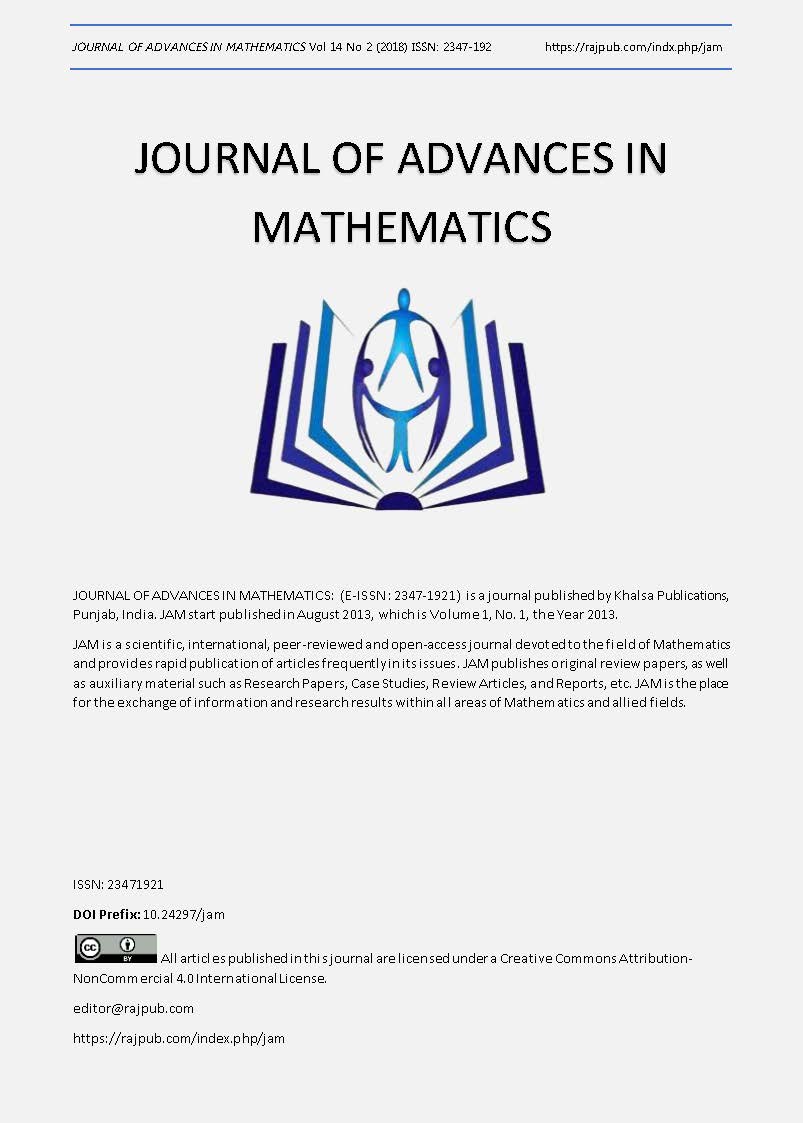Comparison of Quantities of Information in the Human Memory
DOI:
https://doi.org/10.24297/jam.v14i2.7840Keywords:
Information, Impulsive differential equationAbstract
A mathematical model of changing the amount of information in the abstract human memory is proposed in the presence of the subsequent "external discrete" training (filling the information). Under this model, the amount of information is a solution of impulsive differential equation with fixed moments of impulsive effects and variable structure. Sufficient conditions are proposed related to the moments and magnitudes of the impulsive effects (i.e., to the moments of discrete training and the volume of the received information), where the quantities of information in two different models of learning can be compared.
Downloads
References
Agarwal R., Hristova S., O’Regan D., Noninstantaneous impulses in Caputo fractional differential equations and practical stability via Lyapunov functions, Journal of the Franklin Institute, Vol. 354, Issue 7, (2017), 3097-3119.
Ahmad N., Ali Z., Shah K., Zada A., Ghaus ur Rahman, Analysis of implicit type nonlinear dynamical problem of impulsive fractional differential equations, Hindawi Complexity, Vol. 2018, Article ID 6423974, 15 pages.
Ali A., Rabiei F., Shah K., On Ulam’s type stability for a class of impulsive fractional differential equations with nonlinear boundary conditions, J. of Nonlinear Sciences and Applications, Vol. 10, Issue 9, (2017), 4760-4775.
Alves J., Carvalho M., Siqueira J., Equilibrium states for impulsive semiflows, J. of Mathematical Analysis and Applications, Vol. 451, Issue 2, (2017), 839-857.
Chen Z,, Zhang T., Tade M., Brooks G., Existence of periodic solutions of a continuous flow bioreactor model with impulsive control in microorganisms, J. of Applied Mathematics and Computing, Vol. 53, Issue 1-2, (2017), 471-486.
Chukleva R., Dishliev A., Dishlieva K., Continuous dependence of the solutions of the differential equations with variable structure and impulses in respect of switching functions International J. of Applied Science and Technology, Vol. 1, Issue 5, (2011), 46-59.
Dishliev A., Dishlieva K., Abou Habib M., Mathematical model of dynamics of the amount of information in human memory, American J. of Education, Vol. 123, Issue.4 (2), (2017), 1073-1081.
Dishliev A., Dishlieva K., Antonov A., Abou Habib M., Mathematical training model maintaining minimum amount of information in the memory, London Review of Education and Science, Vol. 22, Issue 2, (2017), 323-340.
Dishliev A., Bainov D., Continuous dependence on the initial condition of the solution of a system of differential equations with variable structure and with impulses, Putt. RIMS, Kyoto Univ., Vol. 23, (1987), 923-936.
Dishliev A., Dishlieva K., Antonov A., Abou Habib M., Mathematical model of the amount of information in the human memory for short time discrete trainings, Science and Educational Studies, Vol. VIII, Issue 1 (29), (2018), 229-244.
Dou J., Li S., Optimal impulsive harvesting policies for single-species populations, Applied Mathematics and Computation, Vol. 292, (2017), 145-155.
Longo F., IDE: Optimization problems and population dynamics, XI Congress GAFEVOL, University of Brasilia, Brazil, on October 23-26, (2017), 67-68.
Peng Y., Wu K., Qin S., Kang Y., Properties of solution of linear controlled systems with impulses at variable times, In Control Conference (CCC), 36th Chinese IEEE, (2017), 811-816.
Stamov G., Stamova I., On stable integral manifolds for impulsive Kolmogorov systems of fractional order, Modern Physics Letters B, Vol. 31, Issue 15 (2017), 1750168.
Tahmasebi A., Fodian A., Modification of homotopy perturbation method for solving system of integro-differential equations, World J. of Modelling and Simulation, Vol. 13, Issue 2, (2017), 133-142.
Tripathy A., Santra S., Characterization of a class of second order neutral impulsive systems via pulsatile constant, Differential Equations & Applications, Vol. 9, Issue 1, (2017), 87–98.
Witayakiattilerd W., PID controller singularly perturbing impulsive differential equations and optimal control problem, Advances in Mathematical Physics, Vol. 2017, Article ID 1938513.
Yang D., Wang JinRong, O’Regan D., Asymptotic properties of the solutions of nonlinear non-instantaneous impulsive differential equations, J. of the Franklin Institute Vol. 354, (2017), 6978–7011.
Downloads
Published
How to Cite
Issue
Section
License
 All articles published in Journal of Advances in Linguistics are licensed under a Creative Commons Attribution 4.0 International License.
All articles published in Journal of Advances in Linguistics are licensed under a Creative Commons Attribution 4.0 International License.








